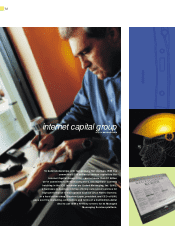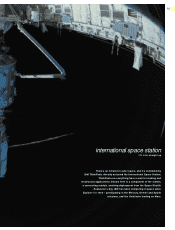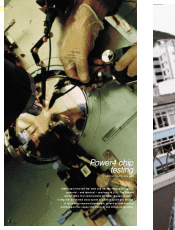IBM 1999 Annual Report Download - page 22
Download and view the complete annual report
Please find page 22 of the 1999 IBM annual report below. You can navigate through the pages in the report by either clicking on the pages listed below, or by using the keyword search tool below to find specific information within the annual report.
project blue gene
thomas j. watson research center
yorktown heights new york
How do subtle changes in the way proteins form
turn otherwise normal red blood cells into cells that cause the
condition known as sickle cell anemia? In December,
IBM announced a $100 million multiyear initiative to build a
supercomputer powerful enough to explore such questions by
simulating the “folding” of proteins into their complex, final shapes.
Dubbed “Blue Gene” by IBM researchers, the computer may
help unlock hidden causes of cancer, Alzheimer’s disease,
cardiovascular problems, stroke or arthritis. Armed with that kind of
information, scientists can then begin the search for new diagnoses
and treatments needed for cures.
When completed, Blue Gene will be able to calculate at
one “petaflop” (a quadrillion operations per second) – some 500
times more powerful than today’s fastest supercomputers.
To achieve that kind of performance in five years (a full 10 years
ahead of the information technology industry's current
rate of performance improvement), IBM is developing a
new architecture that will be, appropriately, “self-healing” –
so the system can overcome failures during the
more than one year of computation needed to simulate
the folding of just one protein.
20
























